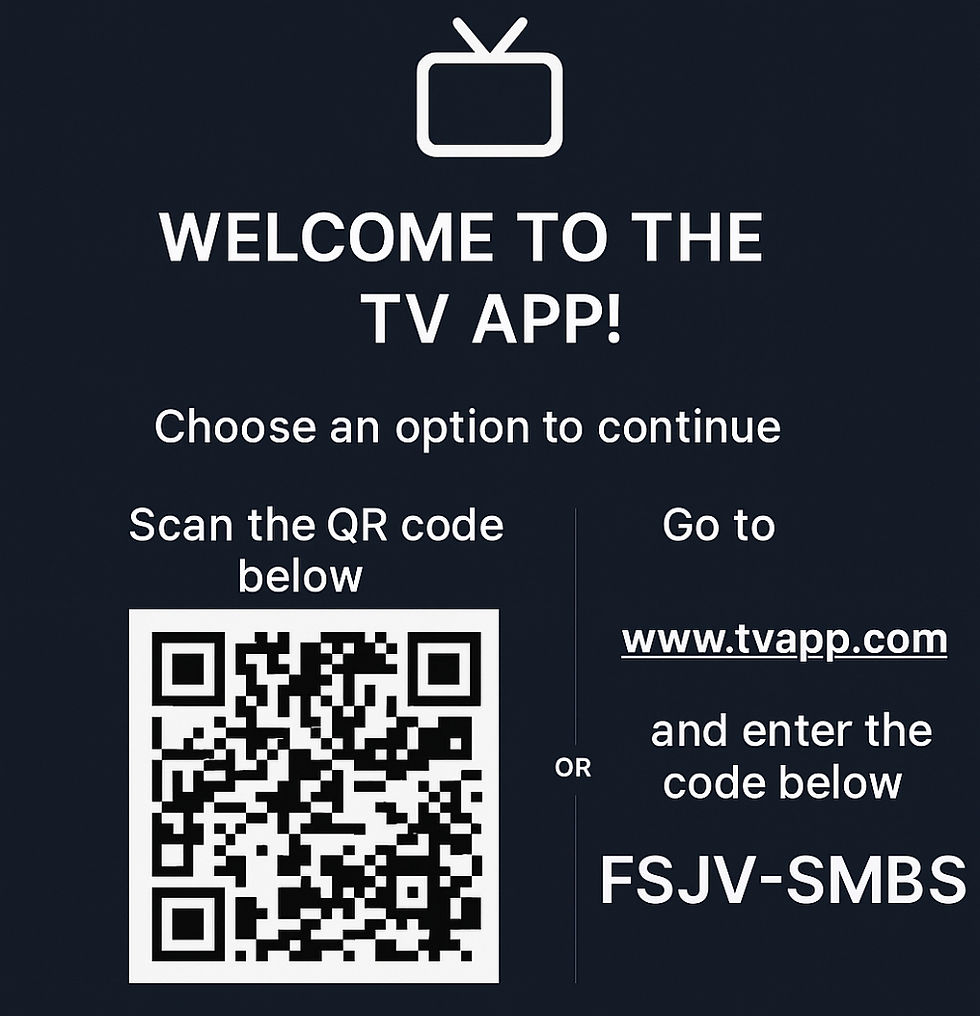Improve TV Product Management with Accessibility Acceptance Criteria
- Alicia Jarvis
- Sep 12, 2024
- 4 min read
Updated: Oct 27, 2025

As TV products evolve, accessibility has become a critical factor in their development. From smart TVs to streaming devices, ensuring that your product is usable for all audiences, including those with disabilities, isn't just good businesspractice—it's essential. Creating Accessibility Acceptance Criteria (AAC) tailored to your specific products ensures that your product is compliant and user-friendly for everyone.
Why Accessibility Acceptance Criteria Are Essential for TV Products
Legal Compliance in Digital TV Products: Broadcasting accessibility regulations, and ICT standards such as EN 301 549 and WCAG, require TV products and streaming services to meet strict guidelines. Non-compliance could lead to lawsuits and heavy fines.
Enhanced Viewing Experience for All Audiences: By ensuring your product meets accessibility criteria, you're creating a seamless experience for viewers with disabilities, whether they are using screen readers, voice commands, or captions.
Increased Market Reach: There are millions of viewers who rely on accessible features such as closed captions, voice guidance, and remote control operability. By building accessibility into your TV product, you expand your potential audience.
Steps for Creating Accessibility Acceptance Criteria for TV Products
1. Understand Relevant Standards - Familiarize yourself with EN 301 549, WCAG 2.1, and any other regional regulations relevant to TV accessibility. These guidelines provide a foundation for creating AAC. Some examples of AAC for TV products include:
Voice guidance systems must provide clear, navigable audio descriptions for all on-screen menus.
Closed captioning must be available for all broadcast and streaming content.
2. Consider Multi-Device Usability - With TV products now spanning multiple devices (smart TVs, mobile apps, streaming devices), it’s crucial that your accessibility criteria apply across all platforms. For example:
Ensure that remote control functionality is accessible via voice commands or tactile buttons for users with physical impairments.
Streaming apps should be fully navigable with screen readers on both smart TVs and mobile devices.
3. Collaborate with Design and Development Teams - Accessibility should be a cross-functional effort. Work with designers to ensure the TV interface supports features like high-contrast modes and readable fonts. Developers should focus on building out voice commands, keyboard navigation, and compatibility with assistive technologies.
4. Create Specific, Measurable Accessibility Criteria - Avoid vague criteria like “Ensure the product is accessible.” Instead, provide clear, measurable criteria that define exactly how the product must meet accessibility needs. For example:
Given I adjust the size, colour and font of captions when I watch a movie then I can see what's being said
Given I use a screen reader, when I navigate to menus then I can understand the options presented to me
5. Test on Multiple Devices and with Assistive Technologies - Given the variety of TV products and platforms, make sure your AAC is validated across all devices, including smart TVs, set-top boxes, mobile streaming apps, and more. Use testing tools like Lighthouse, axe DevTools or WAVE for web-based streaming platforms, and test compatibility with assistive technologies like screen readers, voice navigation systems, and alternative input devices.
6. Get Feedback from Users with Disabilities - Automated testing tools are helpful, but they can’t replace real-world testing. Engage users with disabilities to test your TV product. This ensures your AAC is practical and that any usability challenges are addressed before launch.
Best Practices for Writing Accessibility Acceptance Criteria for TV Products
Ensure Navigability Across Devices: For TV products, accessibility goes beyond the screen—it includes the remote, voice commands, and other input devices. Ensure your criteria cover how users will interact with your product in various contexts, including smart remotes, mobile apps, and voice assistants.
Focus on Key Accessibility Features: Some of the most common accessibility features in TV products include:
Closed captions: Ensure captions are customizable (size, color, font) for better readability.
Voice guidance: Menus and interfaces should be fully operable through voice commands.
Keyboard/remote navigation: Users should be able to access all menus and content using only a remote or keyboard without relying on a mouse or touchscreen.
Follow WCAG and EN 301 549 Guidelines: Align your acceptance criteria with standards from WCAG 2.1 and EN 301 549. These standards can help you ensure that your TV products meet global accessibility guidelines.
Document Accessibility Features for End-Users: Make sure that your team provides documentation and guides on how users can access and customize these features. Consider adding an accessibility section in your user manual or within your TV product’s settings menu.
Common Accessibility Mistakes in TV Products
1. Inaccessible Remote Controls - Remote controls often lack tactile markers or voice functionality, making them difficult for users with disabilities to navigate. Ensure AAC covers all input devices.
2. Omitting Voice Guidance - For visually impaired users, voice guidance is critical. Not including this feature can severely limit accessibility.
3. Neglecting Content Providers - Accessibility isn't just about the device—it’s about the content. Ensure your criteria extend to content providers, requiring captions and described video on all streaming or broadcast content.
For TV product managers, creating effective accessibility acceptance criteria is a crucial step in delivering an inclusive viewing experience. Whether you're developing a new smart TV, set-top box, or streaming app, accessibility should be a priority from the beginning. By implementing these steps, you can ensure that your TV product is not only compliant but also user-friendly for everyone.



Comments